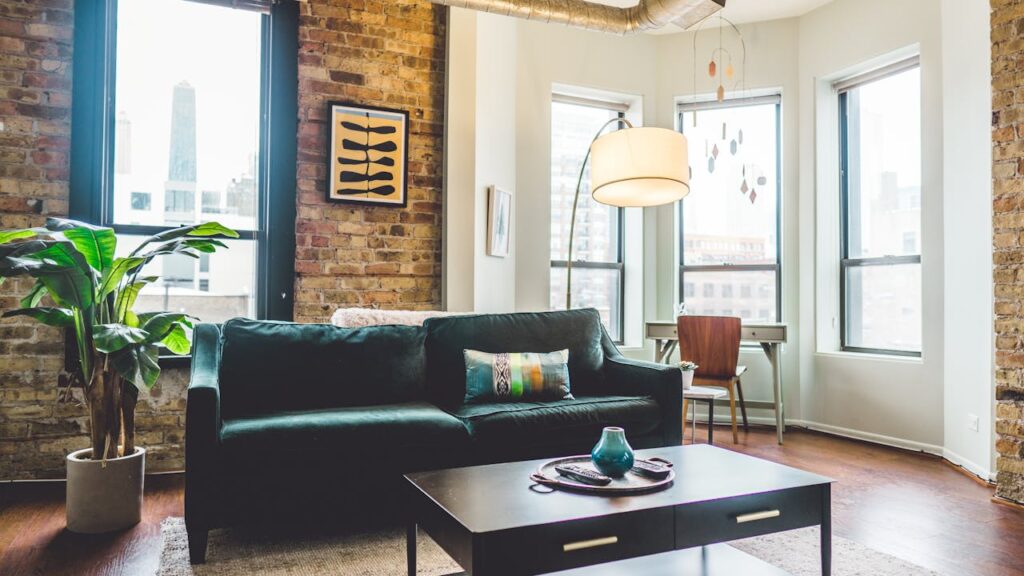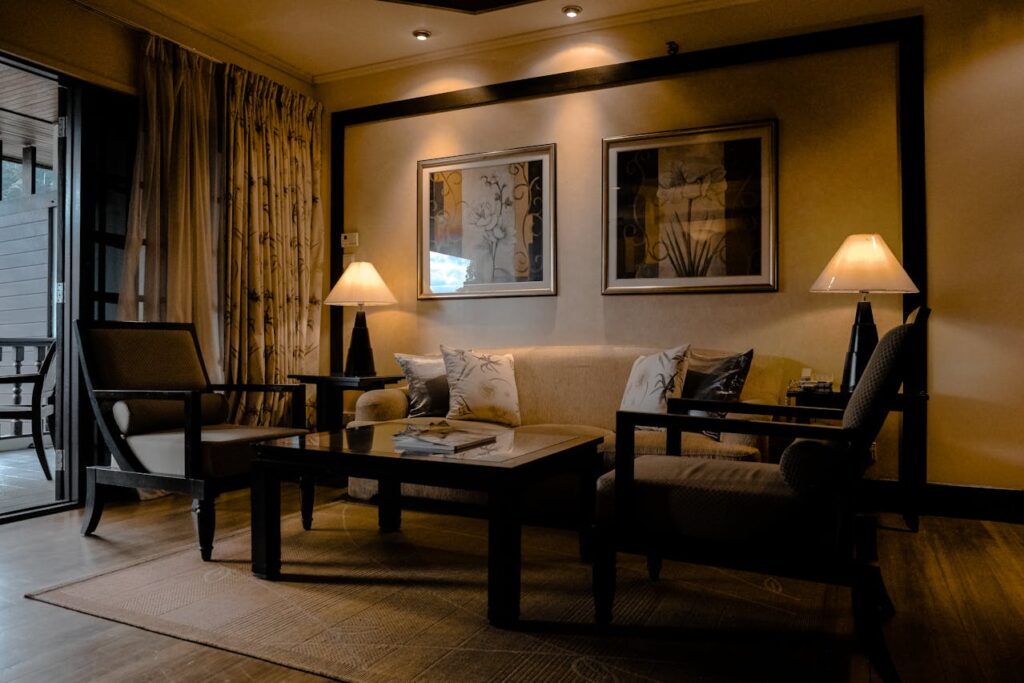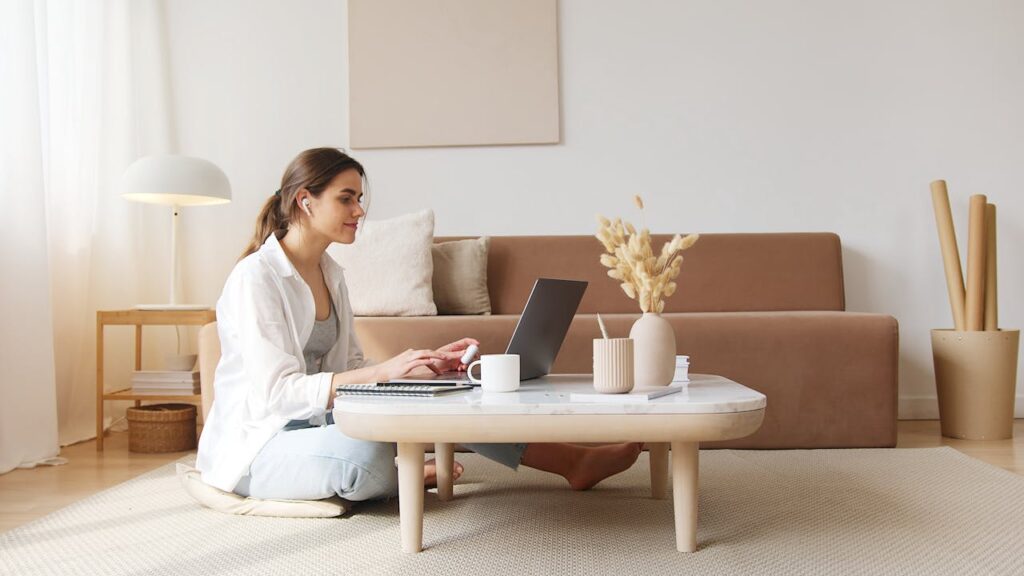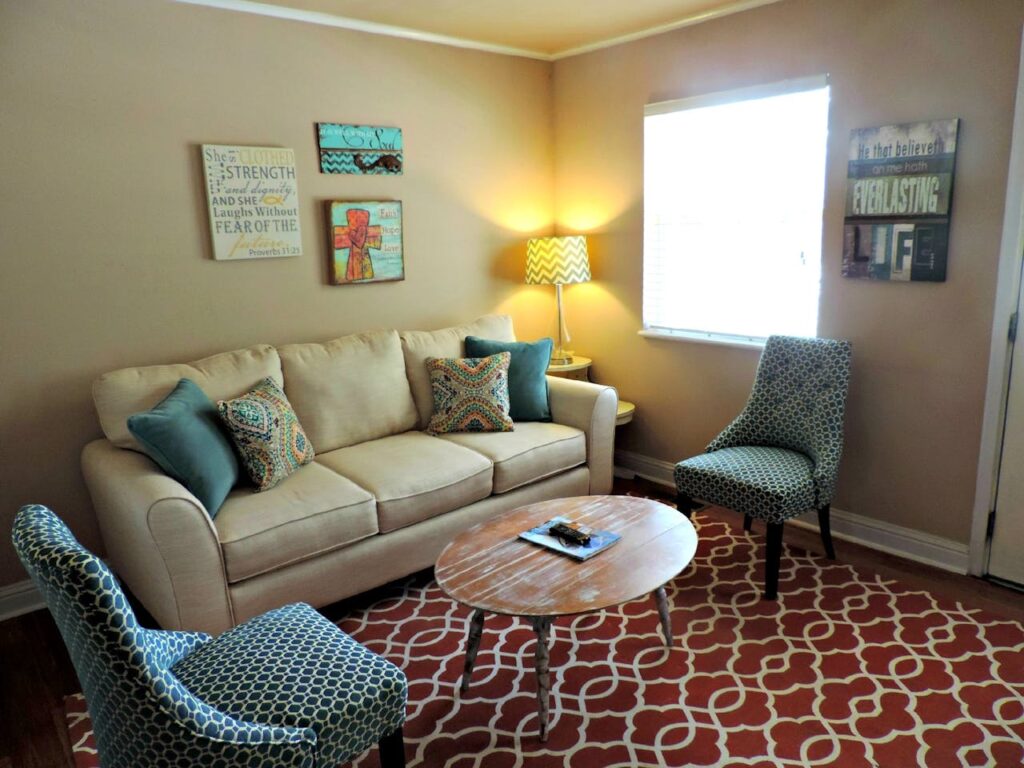A coffee table is more than just a functional piece of furniture—it serves as the centerpiece of your living room, tying together seating arrangements while offering both style and practicality.
Selecting the right coffee table requires careful consideration of size, shape, material, and functionality to ensure it enhances your space without overwhelming it. Whether you’re looking for a minimalist design or a statement piece, here’s everything you need to consider when choosing the perfect coffee table.
Understanding Size and Proportion

Finding the Right Height
A coffee table should complement your seating arrangement in height to ensure comfort and functionality. Ideally, the table’s surface should be level with or slightly lower than the seat cushions of your sofa. This typically ranges between 16 to 18 inches, but if you have a higher seating arrangement, you may opt for a table around 20 inches tall to maintain proportionality.
Considering Length and Width
The size of your coffee table should align with the length of your sofa to maintain balance in your living space. A general rule is to choose a table that is approximately two-thirds the length of your sofa. Additionally, leave at least 12 to 18 inches of space between the coffee table and the surrounding seating to ensure easy movement and accessibility.
Selecting the Best Shape

Rectangular for Versatile Use
Rectangular coffee tables are a popular choice for most living rooms due to their ability to fit well in standard sofa arrangements. They provide ample surface space and work well in larger seating layouts.
Round or Oval for Flow and Safety
If your space has a lot of sharp-edged furniture, a round or oval coffee table can soften the aesthetic while improving the flow of movement. These shapes are also ideal for homes with children, as they eliminate hard corners that can pose a safety risk.
Square for Compact Spaces
Square coffee tables work well in smaller seating arrangements or modular sectionals, offering symmetry and functionality in compact spaces. However, they can sometimes feel bulky in tight areas, so ensure they don’t dominate the room.
Choosing the Right Material

Wood for Warmth and Durability
Wooden coffee tables add a warm and timeless touch to any space. Oak, walnut, and teak offer durability, while lighter woods such as pine create a more relaxed, casual look. Keep in mind that wood requires maintenance to prevent scratches and moisture damage.
Glass for an Open and Airy Look
Glass coffee tables create a sense of openness, making them ideal for smaller spaces. They reflect light and can make a room feel larger, but they also require regular cleaning to prevent smudges and fingerprints. If you opt for a glass table, consider one with a sturdy metal or wooden frame for added stability.
Metal for an Industrial Edge
Metal coffee tables bring a sleek, modern, or industrial touch to a space. They are durable and easy to clean but can feel cold in certain decor styles. Combining metal with materials like wood or glass can balance the look while adding warmth.
Marble or Stone for Elegance
Marble and stone coffee tables exude luxury and sophistication. They make a bold statement in any space but are often heavy and require sealing to prevent stains. If you want the look of stone without the weight, consider faux-marble options that mimic the aesthetic while being more practical.
Incorporating Functionality

Storage Features for Practicality
If you need extra storage, opt for a coffee table with built-in drawers, shelves, or hidden compartments. These options help keep remotes, magazines, and other small items organized while maintaining a clutter-free surface.
Nesting Tables for Flexibility
Nesting coffee tables provide versatility by offering multiple surfaces that can be arranged or stacked as needed. They are great for small spaces where additional surface area may be required occasionally but not all the time.
Lift-Top Tables for Multi-Use Spaces
Lift-top coffee tables add functionality by providing hidden storage and an elevated surface for working or dining. These are perfect for compact apartments where furniture needs to serve multiple purposes.
Matching Your Style and Decor

Coordinating with Existing Furniture
Your coffee table should complement your existing furniture rather than clash with it. Consider the colors, materials, and finishes of your sofa, chairs, and other accent pieces to create a cohesive look. If you have a traditional decor style, a wooden or upholstered coffee table may work best, while sleek glass or metal tables suit contemporary spaces.
Adding a Statement Piece
If your living room feels neutral or lacks visual interest, a bold coffee table can serve as a statement piece. Choose a unique design, an unusual shape, or an eye-catching material to add character to the space without overwhelming it.
Final Thoughts
A well-chosen coffee table not only enhances your living room’s decor but also serves as a functional centerpiece. By considering size, shape, material, functionality, and style, you can find the perfect table that fits seamlessly into your space while elevating its overall aesthetic.

